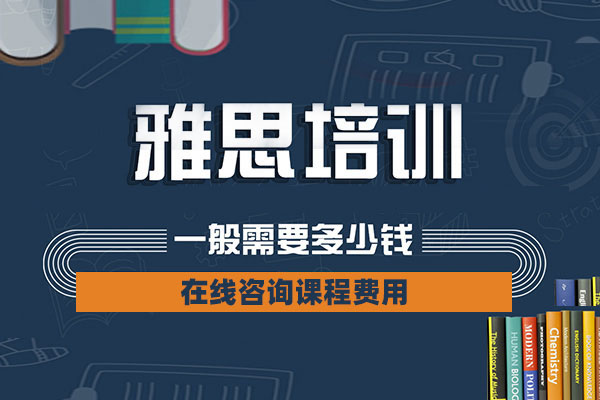2021年12月4日雅思考试回顾
作者:miao老师来源:longre时间:2022-01-17 15:33:58
摘要:雅思考试回顾
2021年12月4日雅思考试口语回顾
Part1题目汇总(加粗题为高频题)
Part2 题目汇总(加粗题为高频题)
人物类:
Describe a creative person whose work you admire.
Describe a businessman you admire.
Describe a famous athlete you know.
Describe a person who solved a problem in a smart way.
Describe someone who is older than you that you admire.
Describe your favourite singer.
Describe a foreign person who you have heard or known that you think is interesting.
地点类:
Describe a cafe you like to visit.
Describe a place you visited on vacation.
Describe a city that you want to live in.
Describe a tall building in your city you like or dislike.
Describe a quiet place you like to spend your time in.
物品类:
Describe a habit your friend has and you want to develop.
Describe a difficult decision that you once made.
Describe an exciting book that you enjoy reading.
Describe a piece of local news that people are interested in.
Describe an activity that you do after school/work.
Describe a piece of equipment that is important in your home.
Describe a movie that you like.
Describe a company where you live that employs a lot of people.
Describe a leisure activity near the sea that you want to try.
Describe an article on health you read in a magazine or on the Internet.
Describe a talent you want to improve.
Describe a law on environmental protection your country should have.
Describe a puzzle you have played.
事件类:
Describe a time when you waited for something special that would happen.
Describe a bicycle/motorcycle/car trip you would like to go.
Describe a good service you received.
Describe a time you were friendly to someone you didn’t like.
Describe a time when you got up early.
Describe a time when you tried to do something but was not very successful.
Describe a time you bought something from a street market.
Describe a time you saw something interesting on social media.
Describe an art or craft activity that you had.
Describe a disagreement two people around you had.
Describe a plan in your life (not related to work/study).
Describe an occasion when many people were smiling.
Describe a time when you helped a friend.
Describe an occasion when you were not allowed to use your mobile phone.
朗阁讲师点评
Part1:
*部分的话题整体难度都不是很大,关键在于考前大家要做好充分的准备,在这个部分要准确清晰的回答*的问题,把握住正确的时态,以及细节原因的补充拓展。
Part2:
在第二部分大家一定要充分利用考场上准备的一分钟时间,仔细读题,特别是标题,一定要正确把握题目的意思,抓紧时间记录一些重点,来提示自己的答题。也要把握好流利度,减少表达中的卡顿。
考试建议
在第二部分大家一定要充分利用考场上准备的一分钟时间,仔细读题,特别是标题,一定要正确把握题目的意思,抓紧时间记录一些重点,来提示自己的答题。也要把握好流利度,减少表达中的卡顿。
2021年12月4日雅思考试听力回顾
场景话题:
P1汽车事故报障/ P2科技博物馆/ P3职位发展/ P4海狮
P1填空/ P2 选择+配对/ P3 选择/P4 填空
朗阁讲师点评
本场考试难度正常,题目类型比较常规,填空题出现在P1、P4。答案(仅供参考)如下:
1. mud
2. oil
3. drive
4. car
5. passenger
6. bridge
7. back
8. warm
9. 40 minutes
10. 答案暂无
11. B. they accepted a survey before
12. B. café
13. B. plants
14. A. holding all kinds of parties
15. B. get extra income for the museum
16. C. send them electronically
17. 配suitable for all ages
18. 配was made a long time ago
19. 配win an award
20. 配have special he-tech dramatic effect
21-30. 答案暂无
31. sea lion
32. Australia
33. zoos
34. sharks
35. ocean
36. rocks
37. helicopter
38. public
39. 答案暂无
40. 答案暂无
本场考试听到的反馈有点两极化,有的考生说是“史上*简单的听力考试之一”,有的考生说P3、P4完全跟丢了。从题型分布来看,本场考试比较常规,填空和选择的比例为20:20。P1、P4以填空题为主,考察的词汇也比较基础,mud这个单词,可能有些考生一下子反应不过来,因此,考生在记忆听力单词时不要只盯着书本看,要听着发音做听写练习;P2、P3则出现了选择和配对。P1是咨询场景的新题,咨询类的场景*近考察的也比较多,场景词汇要加强积累;另外,剑桥真题也可以找到类似的练习,可以针对这个场景进行练习,总结常见考点,这样在考试的时候才能胸有成竹。P2是博物馆的介绍,旧题,题型是选择和配对,也是P2经常出现的形式。P3考察的是选择题,新题,P3是非常容易出现全选择题的情况,也是考生*为头痛一种题型,来不及读题,容易跟丢。这类题目在审题的时候注意简化选项信息,“求同存异”,留下这个选项区别于其他选项的核心特征;在听题的时候注意及时勾画听到的信息,*证自己的注意力跟着录音。P4考察的是动物类的场景,新题,动物类一向是P4的高频场景,考生一定要熟悉这部分的场景词汇。
考试建议
场景方面:场景方面依然是主流场景(咨询、旅游生活场景、课程讨论、学科探讨和讲座),在接下来的考试,考生还应将重点放在P1咨询,租房,旅游,找工作;P2旅游,活动及公共场所设施介绍;P3课程讨论及论文写作;P4各类学科探讨和讲座。
2. 题型:题型方面,P1、P4注意填空题。P1场景简单并且比较固定,考试之前需要把P1的高频场景词汇都过一遍,这样在考试的时候才能更快调动相关的场景词。另外,记忆听力单词要做听写练习,建立发音和单词的联系,*自己的反应速度;P4的场景注意练习商业、社科、动植物、科技类(参考练习:剑10 Test2 Section 、剑8 Test3 Section4;剑13 Test2 Section 4、剑7 Test2 Section4;剑9 Test4 Section4、剑9 Test1 Section4;剑10 Test4 Section4),多积累场景词汇及同义替换;P2、P3还是以单选/多选和配对为主,注意地图题仍然有可能出现。选择题在平时做题的过程中注意干扰项的排除,总结干扰项的类型,积累同义替换,坚持做精听练习,才能更好地应对这类题目(参考练习:剑8 Test2 Section3;剑9 Test1 Section 3;剑11 Test1 Section3);地图题注意通过练习积累位置的表达(参考练习:剑14 Test 2 Section2;剑13 Test1 Section1)。
3. 机经:如需参考机经,以2016-2020年机经为主。
2021年12月4日雅思考试写作回顾
小作文: bar chart
大作文: The key to solving environmental problems: present generations must be willing to accept less comfortable life for the sake for future generations. Do you agree or disagree?
朗阁讲师点评
1.本次考试 难度中等。
2.整体分析:
Task 1:bar chart (以下为考生回忆图形)
The bar charts below show average hours that 15-year-old boys and girls spent on homework and their average grades in the UK in 2017.
注意:1.本题两幅图之间的关联不太密切,可以分别就两幅图中的数据进行比较描写。注意逻辑思路要清晰2. 时间发生在2017年,注意时态应使用一般过去时;3.词句表达准确,并尝试从主语出发*句子的多样性。
相关表达:
… rank the top/rank first/rank in the first place
…, followed by …
Next came …, which was slightly higher than …
Few students, regardless of their gender, allocate no time or beyond 14 years on finishing their homework.
Task 2 :环境类话题
题目翻译:解决环境问题的关键之处在于当代人愿意为了后代接受没那么舒适的生活。多大程度上同义或者不同意?
从话题上来说,属于环境类话题,考生可以运用平时对此话题的积累加以论证。这个题目看似晦涩,其实跟经典题库中的要不要lead a simple life大同小异(即2020年8月22日考题)。再次提醒大家,考回要好好用起来~
从类型上来说,属于agree or disagree的辩论类文章,在写作时要清晰地表明自己的立场。
可以采取四段式的写法:
*段:题目改写+个人观点。
第二段:降低现代人的舒适度的确可以减少对环境造成的影响。
第三段:但这并不是解决环境问题的关键之处,也很难实现。
第四段:总结段-重申个人观点。
题目思路:
主体段 1: 降低现代人的舒适度的确可以减少对环境造成的影响。
减少家用电器的使用(the use of electronic devices),出行时少开私家车(reliance on private-car usage),多走路、骑自行车或者公共交通(public transits),甚至是减少出行(commuting frequency),日常生活中节约用水(循环用水)等等都能减少对于能源的使用和减少污染物的排放,对于解决环境问题确实是有利的。
主体段2: 但这并不是解决环境问题的关键之处,也很难实现。
但这肯定不是一个好的办法。很少有人会愿意放弃他们拥有的东西和舒适的生活,因为人们总是想让生活变得越来越舒适,而不是相反。一旦人们习惯了开车出现,使用各种家用电器,享受丰盛的事物,他们很难回到没有这些的生活方式中,即使为了解决环境问题,为了下一代。与之相比,我认为其他的方式才更为关键。其一,开发和使用清洁能源会是办法之一(explore and transfer the reliance to green recycling energy)。例如增加使用太阳能、风能、核能和水电,从而减少对化石燃料的使用。要知道,相较于个人对环境的伤害(compared with the damage generated in daily life),这些加工过程中造成的伤害是成倍的(triple even quadruple)。再者,很多企业为了谋取利润(profit-oriented, seek for increasing profits)而不太愿意在污染清理上花钱,所以规范的排放准则和环境意识上的引导更为重要(of greater significance)。
考试建议
1.小作文:重点关注柱图、线图、表格
2.大作文:重点关注科技、政府、教育话题;report今年出现较多,需要稍加注意。
3.重点浏览2018, 2019,2020年写作机经,可借助《*范文书》第8版经典旧题来复习。
2021年12月4日雅思考试阅读回顾
P1 人脸识别
P2 *文学
P3 蜜蜂授粉
朗阁讲师点评
1. 本场考试的难度偏高。
2. 整体分析:涉及科学类(P1)、文学类(P2)、动物类(P3)。
本次考试阅读部分难度较大的原因之一是填空形式的题量比例非常少,而判断和选择的形式占了很大比例的题量。从话题角度来看P1的科技类话题考生们相对比较陌生,而P3的有关蜜蜂话题的考察是反复考过多次的话题,考生们相对来说会更加熟悉一些。从题型搭配来看三篇文章都考到了判断+配对这样的搭配形式,需要注意。
3. 部分答案及参考文章:
Passage 1:人脸识别
题型:判断+配对+多选
具体文章和题目待确认
Passage 2:*文学
题型:填空+配对+判断
参考答案:
14-18填空
14. stories
15. America
16. folklore
17. fairy-stories
18. adventures
19-23配对
19. C
20. A
21. E
22-26判断
22. F
23. T
24. NG
25. T
26. T
Passage 3:蜜蜂授粉
题型:判断+选择+配对
参考答案:
27-30判断
27. N
28. NG
29. NG
30. Y
31-35选择
31. 选lack of variety of crops
32. 选they can be moved from one place to another
33. 选their dependence on specialization may cause future
34. 选wild bees work more efficiently as pollinator
35. 选the use of bees should depend on the size of the farm
36-40配对
36. 配it would cause severe damage to both commerce and agriculture
37. 配agriculture system is vulnerable
38. 配大量蜜蜂需要去授粉
39. 配本地蜜蜂可以幸存下来
配不是很特别的农场
考试建议
1. 本场考试的三篇文章都考察了判断+配对的搭配形式,需要引起重视,相应的复习也应该根据考试的题型重点侧重复习,并且P3的配对还考察了非主流的配对类型,所以针对配对题的复习需要面面俱到,各种类型的配对都需要准备到。
2. 本场Heading题型没有考察到,后面考场的同学需要注意,后面场次可能会出现。
3. 动物学话题依然是话题方面的重点。
-
-

-
全真测评
入学测评 阶段测评
-
-
-

-
科学体系
智能词汇 专项题库
-
-
-

-
学习督导
全程监督 引导学习
-
-
-

-
品牌优势
教师护航 学习无忧
-
沪ICP备17003234号 版权所有:上海朗阁教育科技股份有限公司
总部地址:上海市黄浦区淮海中路222号力宝广场5楼
Copyright 2005 LONGRE EDUCATION GROUP All Rights Reserved

 400-886-8609
400-886-8609





